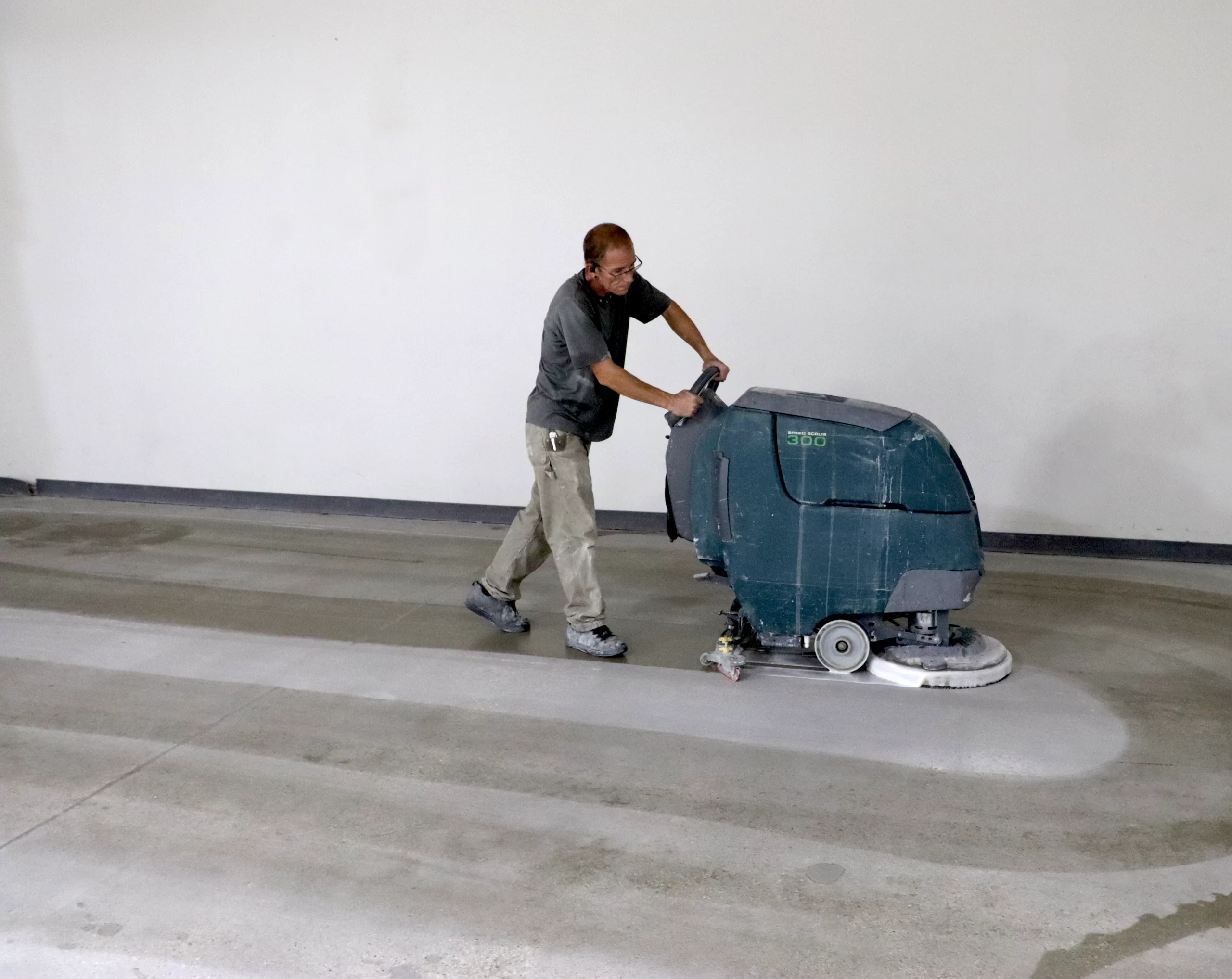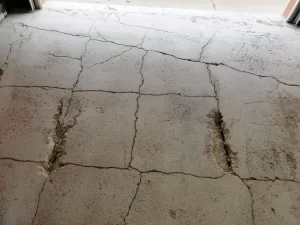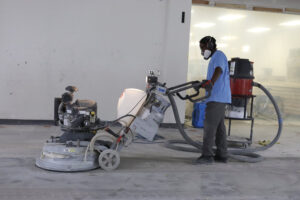It can be easy to confuse the look of a high gloss transparent concrete coating with a polished concrete floor, but there are many differences between the two in both performance and aesthetics.
Polished concrete offers a natural looking finish; the appearance of which is determined by the concrete’s inherent color and aggregate exposure, giving it what is often called an “industrial look.” Polishing involves grinding the existing concrete surface, which is time-consuming and may require multiple steps to do properly. It is more environmentally friendly to polish concrete rather than coat it, as polishing utilizes the existing concrete substrate without the need for additional materials. The level of maintenance the floor will require depends on the level of gloss and the traffic it experiences. Polished concrete may also require periodic re-polishing to maintain its appearance. The cost of polishing can vary based on factors such as the condition of the existing concrete and desired level of polish. Generally, polishing concrete may have a higher upfront cost due to how labor-intensive the process is.
Concrete coatings can provide a glossy, reflective surface if desired. This often enhances the color of the concrete and can give a more luxurious and decorative appearance when compared to polished concrete. The application of a decorative floor coating is often quicker than polishing, and the coating acts as a protective layer that is resistant to stains and wear. Though sturdy, a polyaspartic floor coating may require periodic reapplication or touch-ups to maintain its glossy appearance. The cost of coating a floor may be lower compared to polished concrete, but it depends on the type and quality of the coating used. Installation is often less labor-intensive, contributing to potential cost savings. The environmental impact depends on the type of coating used as well. Water-based and low-VOC (volatile organic compound) options are available for those looking for eco-friendly options.
Both polished concrete and polyaspartic floor coatings have their pros and cons. As always, it’s a great idea to consult a professional when determining which option will suit your needs the best.





